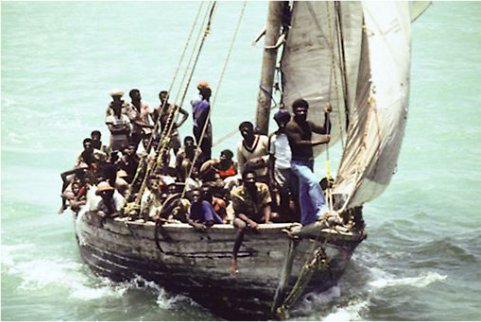Where Do We Migrate To?
dal 1/2/2012 al 14/4/2012
Segnalato da
Acconci Studio
Svetlana Boym
Blane De St. Croix
Lara Dhondt
Brendan Fernandes
Claire Fontaine
Nicole Franchy
Andrea Geyer
Isola and Norzi
Kimsooja
Pedro Lasch
Adrian Piper
Raqs Media Collective
Societe Realiste
Julika Rudelius
Xaviera Simmons
Fereshteh Toosi
Philippe Vandenberg
Eric Van Hove
Niels Van Tomme
1/2/2012
Where Do We Migrate To?
Arnold and Sheila Aronson Galleries C. Johnson Design Center, New York
The exhibition explores contemporary issues of migration as well as experiences of displacement and exile. It seeks to reframe the discourse on transnational movement and identity, and features the work of 19 internationally recognized artists and collectives, including: Acconci Studio, Svetlana Boym, Andrea Geyer, Isola and Norzi, Kimsooja, Pedro Lasch, Adrian Piper, Raqs Media Collective, Societe Realiste, Fereshteh Toosi, and Eric Van Hove.

Niels Van Tomme, director of Arts and Media at Provisions Learning Project, a Washington, DC–based nonprofit that explores the intersection of art and social change, gives a simple answer to this complicated question: “They are the bravest among us.” Indeed, migrants face not only economic disadvantage and ethnic discrimination but struggles with cultural assimilation and personal identity as well.
The complexities of migration and its role in driving social and cultural change are the focus of Where Do We Migrate To?, an exhibition curated by Van Tomme and now on view at the Sheila C. Johnson Design Center (SJDC) at Parsons.
Through work by 19 renowned artists and collectives, Where Do We Migrate To? addresses the displacement and struggles over belonging that migrants experience. In the midst of a heated national debate about the role of migrants in U.S. society, the exhibition seeks to reframe the discourse on transnational movement and identity.
“Migrants have remained figures marked entirely by their transgression of national boundaries,” says Van Tomme. “Where Do We Migrate To? challenges that notion and offers an alternative view of the migrant as a role model and, ultimately, an agent of change.”
For the country’s most international university—27 percent of the New School’s undergraduate population is from outside the United States, the highest proportion in the nation—the exhibition seems particularly relevant. “In foregrounding these political and psychological journeys, these artists map a globalized world continually riven and remade by migrant experiences,” says Radhika Subramaniam, director and chief curator at the SJDC. “The experiences and issues raised by the show resonate deeply within the highly international communities of both The New School and New York.”
The works on view capture the experiences of isolation, acceptance and bureaucracy that are common to migrants around the world. Andrea Geyer, a New York artist who combines visuals and text to explore her research interests, contributed Interim, an 80-page tabloid newspaper telling the story of a young female immigrant from an unnamed country moving to an unnamed American city. In Guías de Ruta, Pedro Lasch presents travel maps used by Latin American immigrants crossing the U.S. border alongside interviews about the journey. Société Realiste’s EU Card Lottery station mimics the game playing of state bureaucracies.
By celebrating migration as a transformative force in the world, Where Do We Migrate To? offers viewers an opportunity to learn about the lived experiences of many in our community.
For press inquiries, please contact
Daisy Wong 212.229.5151 communications@newschool.edu
Image: Superunknown (Alive In The) by Xaviera Simmons, one of the works on view, features found photographs depicting boatloads of migrants on the open ocean.
An opening reception will be held on Thursday, February 2, from 6:30 to 9:00 p.m. in the galleries.
The exhibition was organized by the University of Maryland Baltimore County (UMBC), where it was on view last spring. For more information, visit the SJDC website.
SJDC’s Anna-Maria and Stephen Kellen Gallery
66 Fifth Avenue at 13th Street New York
Gallery Hours:
Open daily 12:00 noon - 6:00 p.m. and late Thursday evenings until 8:00 p.m.
The galleries will be closed on Presidents Day (Monday, February 20) and Easter (Sunday, April 8).
Admission is free



